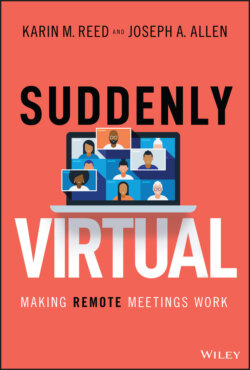Читать книгу Suddenly Virtual - Karin M. Reed - Страница 20
Stay at Home becomes “Stay on Zoom”
ОглавлениеIn early April 2020, more than 90% of the population of the United States was under local or state “stay‐at‐home” orders (Chavez, Hanna, and Maxouris 2020). With face‐to‐face interactions out of the question for large swaths of the nation, people were hungry for ways to connect both professionally and personally.
In the early days of the lockdown, the focus was mostly on finding ways to connect with friends and family, and the quest largely ended with Zoom. The video meeting app was the number‐one free videoconferencing app on Apple's app store and experienced a 300% growth in daily usage by April 1 compared to the time before stay‐at‐home orders (Bary 2020). In just the first three weeks of April alone, Zoom added 100 million participants (Uenuma 2020).
Suddenly birthday parties, bridal showers, and book clubs were taking place on Zoom and other video platforms. While it couldn't provide an exact replica of an in‐person experience, it was pretty darn close, and the price was right – free. Besides which, the technology was relatively easy and usable even for those who had never used videoconferencing before. Lack of familiarity is one of the biggest barriers to adoption for any technology, and with so many people staying at home and staying on Zoom for all manner of reasons, people became more comfortable navigating the relatively intuitive interface in order to stay close but socially distanced in their personal lives.
In the workplace, though, Zoom had plenty of videoconferencing competition that was often already well‐established, if not utilized at high levels across the enterprise. WebEx, BlueJeans, GoToMeeting, and Microsoft Teams, along with many others, had established a strong presence in corporate America. However, many remote workers spoke of using the corporate platform when they had to but also of using a personal Zoom account when allowed by company policy. Some companies even found themselves using different platforms based upon the use case, for example, Zoom for training and Microsoft Teams for internal meetings, or WebEx for sales calls and Adobe Connect for internal presentations. This mix‐and‐match of multiple platforms presented its own challenges, which we will address in Chapter 12. Regardless of the software of choice, video communication had come into its own and opened up the eyes of new users to the benefits it could bring.
